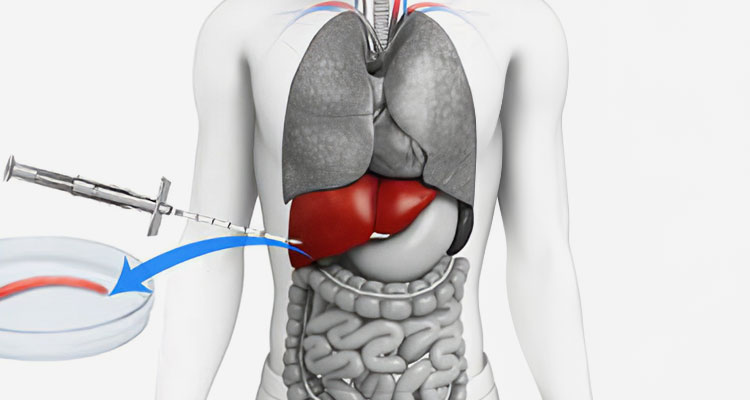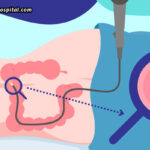The liver is the second largest organ in your body. It is located on the right upper side of your abdomen, under the rib cage. It performs many important functions. It absorbs the energy and nutrients from the food that you eat. It also helps remove harmful substances from your body.
A liver biopsy is a procedure that allows us to take a small piece of liver tissue. We then look at this piece of tissue under the microscope. It helps to find the cause and severity of liver disease. It also helps to make treatment decisions and determine prognosis.
A liver biopsy is performed when blood and imaging tests cannot tell us the full picture of what is happening in the liver.
How do you prepare for a liver biopsy?
Medications that may have to be held:
- Blood thinners
- Non- steroidal anti-inflammatory drugs known as NSAIDs (aspirin, ibuprofen, naproxen, etc.)
- Herbal supplements
How is the liver biopsy performed?
There are two main ways to perform a liver biopsy:
- Percutaneous liver biopsy: This type of biopsy involves inserting a needle into the right upper abdomen (where the liver is located). This is the most common type of liver biopsy and has been done routinely for many years. Your doctor may also perform an imaging test to confirm the position of the needle. Your doctor will give you a local numbing medication before inserting the liver biopsy needle to help reduce pain.
- EUS (Endoscopic Ultrasound) Guided liver biopsy:
- EUS-LB Safety:
- Real-time Doppler helps to avoid intrahepatic vessels
- Low complication rates (a multi-center study calls out a complication rate of 0.9% )
- EUS-LB Clinical Efficacy:
- Reduce sampling error using fanning technique and ability to sample both lobes of liver
- Simultaneous evaluation of the pancreas, gallbladder, common bile duct and other structures
- Concurrent EGD to evaluate upper digestive disorders such as Barrett’s, varices, workup for abdominal pain, etc.
- Adequate or superior specimens to percutaneous and transjugular5 EUS-LB
- Patient Experience:
- Single procedure is convenient and cost effective
- Patient stays within gastroenterology allowing for ongoing direct communication
- Sedation/analgesia for patient comfort, reduced anxiety and eliminates need for breath hold
- Transjugular liver biopsy:This type of liver biopsy involves inserting a catheter into a blood vessel in your neck (after receiving medications to make you comfortable). A needle is then passed into the liver to obtain a sample. Your doctor may choose this method if you have higher risk of bleeding or if you have a buildup of fluid in your abdomen (called ascites).
Other methods of liver biopsy: Less commonly, a surgeon can get a liver biopsy during surgery. There are also special endoscopic techniques (using cameras) to obtain a liver biopsy.
Risks
A liver biopsy does have some risks, but they are not common. The risks include:
- Bleeding: Internal bleeding is a rare complication of liver biopsy. It occurs in 1 out of every 500 liver biopsies. Severe bleeding occurs in 1 out of every 2500 to 10,000 liver biopsies.
- Pain: Pain is the most common complication of liver biopsy. It can occur in 30-50% of patients. It is usually mild. It resolves in a few hours.
- Other Risks: Rarely, infection may occur. Injury to other organs or internal bleeding in space between lung and chest wall may occur rarely.
What happens after the liver biopsy is done?
After the biopsy, a bandage is applied at the needle insertion site. You will be asked to lie on your right side for a few hours. You may receive further directions from your doctor about limiting your physical activity.








